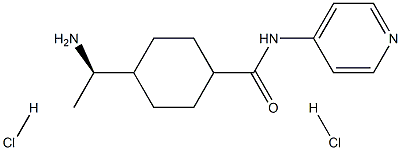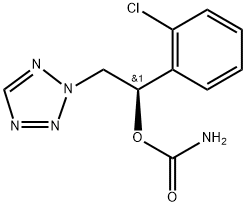Y320
- CAS NO.:288250-47-5
- Empirical Formula: C27H29ClN6O2
- Molecular Weight: 505.01
- MDL number: MFCD28099803
- EINECS: 200-256-5
- SAFETY DATA SHEET (SDS)
- Update Date: 2024-11-19 23:02:33

What is Y320?
The Uses of Y320
1-(4-Chlorophenyl)-N-(3-cyano-4-(4-morpholinopiperidin-1-yl)phenyl)-5-methyl-1H-pyrazole-4-carboxamide inhibits T cell activation induced by IL-15 and shows a therapeutic effect on collagen-induced arthritis in DBA/1J mice.
Biological Activity
y-320 is a new phenylpyrazoleanilide immunomodulator [1].immunotherapy refers to treatment of disease by suppressing, inducing or enhancing an immune response.y-320 is a new phenylpyrazoleanilide immunomodulator. y-320 inhibited il-17 production by cd4 t cells induced by il-15 with ic50 values of 20-60 nm [1].in type ii collagen-induced arthritis (cia) mice, oral administration of y-320 (0.3-3 mg/kg) reduced il-17 mrna expression and significantly inhibited the development of joint destruction and arthritis. the combination of y-320 with anti-murine tumor necrosis factor-α (tnf-α) monoclonal antibody exhibited a synergistic effect. in cynomolgus monkeys, y-320 (0.3-1 mg/kg) relieved cia. these results suggested that y-320 could be a useful candidate for therapy of rheumatoid arthritis (ra) [1].
References
[1]. ushio h, ishibuchi s, oshita k, et al. a new phenylpyrazoleanilide, y-320, inhibits interleukin 17 production and ameliorates collagen-induced arthritis in mice and cynomolgus monkeys. pharmaceuticals (basel), 2013, 7(1): 1-17.
Properties of Y320
| Boiling point: | 631.2±55.0 °C(Predicted) |
| Density | 1.34±0.1 g/cm3(Predicted) |
| storage temp. | 2-8°C |
| solubility | ≥24.8 mg/mL in DMSO with gentle warming; insoluble in H2O; insoluble in EtOH |
| form | solid |
| pka | 11.82±0.70(Predicted) |
| color | Off-white to pink |
Safety information for Y320
| Signal word | Warning |
| Pictogram(s) |
 Exclamation Mark Irritant GHS07 |
| GHS Hazard Statements |
H315:Skin corrosion/irritation H319:Serious eye damage/eye irritation |
| Precautionary Statement Codes |
P264:Wash hands thoroughly after handling. P264:Wash skin thouroughly after handling. P280:Wear protective gloves/protective clothing/eye protection/face protection. P362:Take off contaminated clothing and wash before reuse. P302+P352:IF ON SKIN: wash with plenty of soap and water. P305+P351+P338:IF IN EYES: Rinse cautiously with water for several minutes. Remove contact lenses, if present and easy to do. Continuerinsing. P332+P313:IF SKIN irritation occurs: Get medical advice/attention. P337+P313:IF eye irritation persists: Get medical advice/attention. |
Computed Descriptors for Y320
New Products
4-Aminotetrahydropyran-4-carbonitrile Hydrochloride (R)-3-Aminobutanenitrile Hydrochloride 4-AMINO-TETRAHYDRO-PYRAN-4-CARBOXYLIC ACID HCL 4-(Dimethylamino)tetrahydro-2H-pyran-4-carbonitrile 3-((Dimethylamino)methyl)-5-methylhexan-2-one oxalate 1,4-Dioxa-8-azaspiro[4.5]decane 5-Bromo-2-nitropyridine Nimesulide BP Aceclofenac IP/BP/EP Mefenamic Acid IP/BP/EP/USP Diclofenac Sodium IP/BP/EP/USP Ornidazole IP Diclofenac Potassium SODIUM AAS SOLUTION ZINC AAS SOLUTION BUFFER SOLUTION PH 10.0(BORATE) GOOCH CRUCIBLE SINTERED AQUANIL 5 BERYLLIUM AAS SOLUTION 2-Bromo-1-(bromomethyl)-3-chloro-5-nitrobenzene 2-Bromo-3-nitroaniline N-(3-Hydroxypropyl)-N-methylacetamide 3-Bromo-6-chloropyridazine 4-ethyl-3-nitrobenzoic acidRelated products of tetrahydrofuran

![(R)-4-(1-aMinoethyl)-N-(1H-pyrrolo[2,3-b]pyridin-4-yl)benzaMide dihydrochloride](https://img.chemicalbook.in/CAS/GIF/173897-44-4.gif)
![(R)-4-(1-Aminoethyl)-N-1H-pyrrolo[2,3-b]pyridin-4-ylbenzamide](https://img.chemicalbook.in/CAS2/GIF/199433-58-4.gif)
![N-[(3S,4R)-6-CYANO-3,4-DIHYDRO-3-HYDROXY-2,2-DIMETHYL-2H-1-BENZOPYRAN-4-YL]-N-HYDROXYACETAMIDE](https://img.chemicalbook.in/CAS/GIF/127408-31-5.gif)

![BenzaMide, N-[4-chloro-3-(trifluoroMethyl)phenyl]-2-[2-(diMethylaMino)ethoxy]-6-ethoxy-](https://img.chemicalbook.in/CAS/20150408/GIF/1311423-89-8.gif)


You may like
-
 1-Methyl-6-oxo-1,6-dihydropyridazine-3-carbonitrile 98%View Details
1-Methyl-6-oxo-1,6-dihydropyridazine-3-carbonitrile 98%View Details
99903-60-3 -
 88491-46-7 98%View Details
88491-46-7 98%View Details
88491-46-7 -
 1823368-42-8 98%View Details
1823368-42-8 98%View Details
1823368-42-8 -
 2-(3-(tert-butyl)phenoxy)-2-methylpropanoic acid 1307449-08-6 98%View Details
2-(3-(tert-butyl)phenoxy)-2-methylpropanoic acid 1307449-08-6 98%View Details
1307449-08-6 -
 Ethyl 3-(furan-2-yl)-3-hydroxypropanoate 25408-95-1 98%View Details
Ethyl 3-(furan-2-yl)-3-hydroxypropanoate 25408-95-1 98%View Details
25408-95-1 -
 2-Chloro-5-fluoro-1-methoxy-3-methylbenzene 98%View Details
2-Chloro-5-fluoro-1-methoxy-3-methylbenzene 98%View Details
1805639-70-6 -
 1784294-80-9 98%View Details
1784294-80-9 98%View Details
1784294-80-9 -
 Lithium ClavulanateView Details
Lithium ClavulanateView Details
61177-44-4